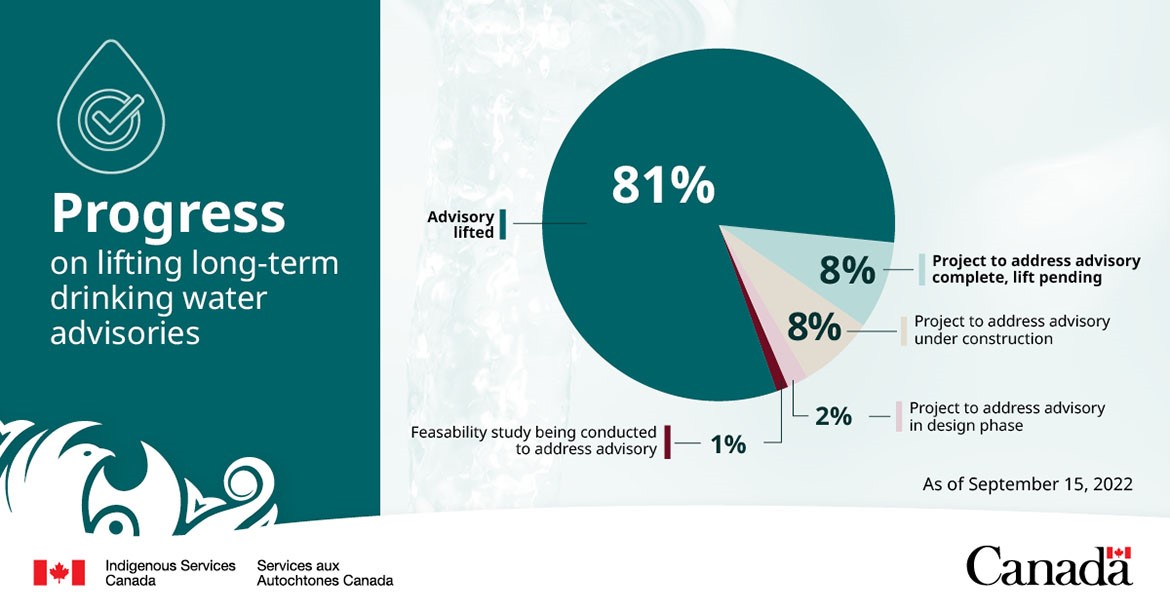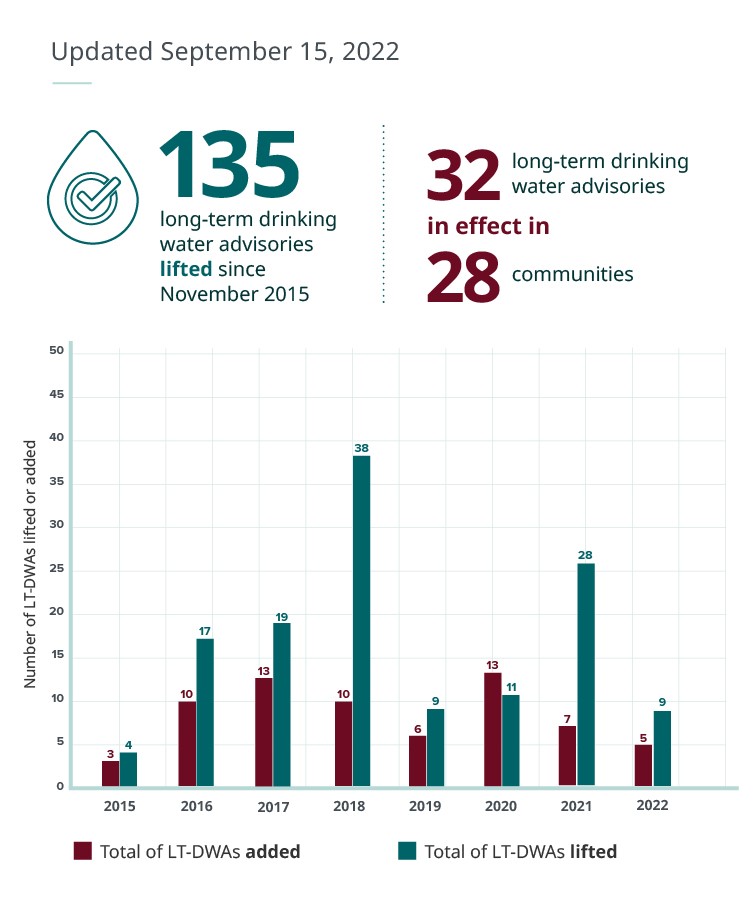



Target audience
| LOCATION | GROUP | LANGUAGE | DATE | TIME (EST) | GROUP COMPOSITION | NUMBER OF PARTICIPANTS |
|---|---|---|---|---|---|---|
| Mid-size and Major Centres Prairies | 1 | English | August 31 | 8:00-10:00 pm | General Population | 8 |
| Ontario | 2 | French | September 1 | 6:00-8:00 pm | Francophones | 7 |
| Eastern Canada (Atlantic Region & ON) | 3 | English | September 7 | 6:00-8:00 pm | Young Adults, aged 25-30 | 7 |
| Western Canada (SK, MB, AB, BC) | 4 | English | September 12 | 8:00-10:00 pm | Young Adults, aged 18-24 | 7 |
| Frontenac Region – ON | 5 | English | September 13 | 6:00-8:00 pm | Travellers | 8 |
| Eastern & Central Canada (ON & NB) | 6 | French | September 14 | 6:00-8:00 pm | Young Adults, aged 18-30 | 6 |
| Small & Rural Centres Prairies | 7 | English | September 15 | 8:00-10:00 pm | Concerned About the Economy | 7 |
| City of London | 8 | English | September 20 | 6:00-8:00 pm | Healthcare Workers | 8 |
| Ontario | 9 | English | September 21 | 6:00-8:00 pm | First Nations Living on Reserve | 8 |
| Atlantic Canada | 10 | English | September 22 | 5:00-7:00 pm | Firearms Owners | 7 |
| New Brunswick | 11 | French | September 27 | 5:00-7:00 pm | Francophones | 6 |
| Newfoundland and Labrador | 12 | English | September 28 | 4:30-6:30 pm | People Nearing Retirement | 4 |
| Total number of participants | 83 | |||||

The image above depicts a selection of statistics and a bar graph demonstrating the progress made by the federal government towards lifting long-term drinking water advisories (LT-DWAs) on Indigenous reserves since November 2015. The top left portion of the image contains a water drop logo with a checkmark inside, accompanied by the text: ‘135 long-term drinking water advisories lifted since November 2015,’ in teal font, with the ‘135’ larger and in bold. Separated by a single dotted teal line, the top right contains text stating: ‘32 long-term drinking water advisories in effect in 28 communities,’ in maroon font, with the ‘32’ and ‘28’ larger and in bold. The bottom two-thirds of the graphic depict a bar graph. The y-axis for the graph is ‘Number of LT-DWAs lifted or added’, the x-axis is ‘Total of LT-DWAs added’ and ‘Total of LT-DWAs lifted’, with a maroon and teal bar representing each, respectively. The data depicted on the bar graph is as follows: 2015 – 3 LT-DWAs added/4 LT-DRAs lifted, 2016 – 10 added/17 lifted, 2017 – 13 added/19 lifted, 2018 – 10 added/38 lifted, 2019 – 6 added/9 lifted, 2020 – 13 added/11 lifted, 2021 – 7 added/28 lifted, 2022 – 5 added/9 lifted’. The infographic was updated as of September 15th, 2022.

The image above is primarily comprised of a pie chart and accompanying statistics demonstrating the progress made by the federal government towards lifting long-term drinking-water advisories (LT-DWAs) on Indigenous reserves in recent years. The leftmost third of the image is a dark teal background with white text: ‘Progress on lifting long-term drinking water advisories,’ with the word ‘progress’ in larger font and emboldened. Above this text is a water drop logo with an encircled checkmark inside, and below is an Indigenous-inspired artwork in white, accompanied by the Indigenous Services Canada logo underneath it. In the bottom right of the image is the Government of Canada wordmark. The rest of the image is comprised of the pie chart depicting the progress made by the federal government on the matter thus far. The data is as follows: 81% – Advisory Lifted (dark teal), 8% – Project to address advisory complete, lift pending (light teal), 8% – Project to address advisory under construction (beige), 2% – Project to address advisory in design phase (light purple), and 1% – Feasibility study being conducted to address advisory (maroon). The infographic was updated as of September 15th, 2022.

The visuals above depict two versions of the same advertising concept for the Canada Dental Benefit. Both versions have a light green background, with a white footer which includes the Government of Canada logo in the bottom left corner and official wordmark in the bottom right corner. In the top left of both images is the text ‘Canada Dental Benefit’ in large, emboldened, dark blue letters with brown placeholder text directly below, with a line separating the two texts. Taking up most of the centre of each concept is the image of a mother hugging her child, both of whom are smiling. The mother is seen looking at her child, while the child is looking more forward. At the leftmost part of this image, there is a visual white outline of a tooth. Below this are three text boxes. On the leftmost concept, these boxes are yellow, light orange, and light purple in colour. On the rightmost concept they are teal, dark blue, and brown. From left to right, the boxes in each of the concepts contain a percentage or fraction. In the leftmost concept, the text is in black, while the rightmost concept has white text. The first box depicts 100% in emboldened font (accompanied by the silhouette of a child running), the second shows 1/4 in emboldened font (showing an individual using a computer), and the final box depicts 50% in emboldened font (showing an individual sitting at a desk writing). Below these images and numbers is smaller placeholder text. Under the boxes in each concept, there is two lines of placeholder text in brown and emboldened font.

The image above depicts an example image of a digital credential. The image is in two parts. On the left side, a traditional British Columbia ID card is depicted. The top-most part of the card says ‘British Columbia Services Card’ in white block letters, and directly below ‘British Columbia CAN’ in larger, blue block letters. Below this is the individual’s name, ‘Cook, Tamara Rosa’ and accompanying photograph with the ID holder’s signature below. This image is accompanied by information including: date issued, date expired, sex, address, and date of birth. The centre-right of the ID shows the British Columbia official Coat of Arms as well as holographic image of the ID holder accompanied by their year of birth. Beside this ID card is a left-ward arrow pointing to an example of a digital version of this ID card. Shown in the frame of a smartphone, we see an app depicting a digital ID card with the text ‘BC Services Card’ and the individual’s name, ‘Cook, Tamara Rosa’ and picture below. Below this sample ID, we see three tappable options: ‘Use My Mobile Card,’ ‘Enter Pairing Code,’ and ‘My Account’. At the bottom of the framed image is the British Columbia logo.

The image above depicts an example of a French digital credential. Presented as it would appear on a smartphone, the image is accompanied by a bright blue header and footer. On the header, the text ‘Permis de conduire’ is written, with a white arrow pointing to the left on the left side of the screen. Under this are two user tabs that read ‘VOIR’ and ‘SÉCURITÉ’, with the image currently toggled to the ‘VOIR’ tab. Below this is a digital image of a Quebec driver’s licence with an image of a woman with long, dark hair. Under this, the information from the driver’s licence is written out in text, with each information box descending vertically. First listed is the ID holder’s name, or ‘Prénom,’ (ANNE-MARIE) and below that, their last name, or ‘Nom de famille,’ (LAPOINTE). Below this are additional information boxes respectively labelled ‘Date de naissance’, ‘Numéro de permis de conduire’, ‘Date de délivrance du permis de conduire’, and ‘Date d’expiration du permis de conduire’. Each information box is accompanied by a small lock symbol, with the information in each of these information boxes censored with a dotted line. To the right of the locks on the ‘Date de naissance,’ ‘Numéro de permis de conduire,’ and ‘Date de délivrance du permis de conduire’ information boxes are three eye icons in bright blue. On the footer, the image shows four different options a user could select, accompanied by images. From left to right, these are: Utiliser eID (accompanied by the silhouette of a person), Documents (accompanied by an image of a stack of documents), Histoire (accompanied by a downward facing and upward facing arrow), and Paramètres (accompanied by the image of a gear).
| Group | Date | Time (EDT) | Local Time | Location | Composition | Moderator |
|---|---|---|---|---|---|---|
| 1 | Wed., August 31st | 8:00-10:00 | 6:00-8:00 (MDT) | Mid-size and Major Centres Prairies | General Population | TBW |
| 3 | Wed., September 7th | 6:00-8:00 | 6:00-8:00 (EDT) 7:00-9:00 (ADT) |
Eastern Canada (Atlantic Region & ON) | Young Adults, aged 25-30 | TBW |
| 4 | Mon., September 12th | 8:00-10:00 | 6:00-8:00 (CST) 7:00-9:00 (CDT) 6:00-8:00 (MDT) 5:00-7:00 (PDT) |
Western Canada (SK, MB, AB, BC) | Young Adults, aged 18-24 | TBW |
| 5 | Tues., September 13th | 6:00-8:00 | 6:00-8:00 (EDT) | Frontenac Region – Ontario | Travellers | DN |
| 7 | Thurs., September 15th | 8:00-10:00 | 6:00-8:00 (CST) | Small Centres/Rural Prairies | Concerned About the Economy | TBW |
| 8 | Tues., September 20th | 6:00-8:00 | 6:00-8:00 (EDT) | City of London | Healthcare Workers | DN |
| 9 | Thurs., September 22nd | 5:00-7:00 | 6:00-8:00 (ADT) 6:30-8:30 (NDT) |
Atlantic Canada | Firearms Owners | TBW |
| 11 | Wed., September 28th | 4:30-6:30 | 5:30-7:30 (ADT) 6:00-8:00 (NDT) |
Newfoundland and Labrador | People Nearing Retirement | DN |
| 12 | Thurs., September 29th | 6:00-8:00 | 6:00-8:00 (EDT) | Ontario | First Nations Living on Reserve | DN |
| LOCATION | CITIES | |
|---|---|---|
| Mid-size and Major Centres Prairies | Cities include: Manitoba: Winnipeg, Brandon, Steinbach, Winkler, Portage la Prairie, Thompson. Saskatchewan: Saskatoon, Regina, Prince Albert, Moose Jaw. ENSURE 4 PARTICIPANTS FROM EACH PROVINCE. NO MORE THAN TWO FROM EACH CITY. ENSURE A GOOD MIX OF CITIES ACROSS THE REGION. |
CONTINUE - GROUP 1 |
| Eastern Canada (Atlantic Region & ON) | Cities could include (but are not limited to):
NS: Halifax, Dartmouth, Cape Breton-Sydney. NB: Moncton, Saint John, Fredericton, Dieppe, Miramichi, Edmundston. PEI: Charlottetown, Summerside. N&L: St. John’s, Conception Bay, Mount Pearl, Corner Brook. ON: Toronto, Ottawa-Gatineau, Hamilton, Kitchener, London, Oshawa, Thunder Bay, Sudbury, Peterborough, Belleville, Stratford, Bolton, Collingwood, Owen Sound, Brockville, Cobourg, Fort Erie, Simcoe. ENSURE 4 PARTICIPANTS FROM ONTARIO. AT LEAST 1 PARTICIPANT FROM EACH ATLANTIC PROVINCE. ENSURE A GOOD MIX OF CITIES ACROSS BOTH REGIONS. INCLUDE THOSE RESIDING IN LARGER AND SMALLER COMMUNITIES. |
CONTINUE - GROUP 3 |
| Western Canada (SK, MB, AB, BC) | Cities include (but are not limited to):
Saskatchewan: Saskatoon, Regina, Prince Albert, Moose Jaw, Swift Current, Yorkton, North Battleford, Warman, Weyburn, Estevan. Manitoba: Winnipeg, Brandon, Steinbach, Winkler, Portage la Prairie, Thompson, Selkirk, Morden. Alberta: Calgary, Edmonton, Red Deer, Lethbridge, Airdrie, Fort McMurray, Medicine Hat, Grande Prairie, Spruce Grove, Fort Saskatchewan, Chestermere, Beaumont, Camrose, Stony Plain, Sylvan Lake. British Columbia: Vancouver, Victoria, Kelowna, Abbotsford, Surrey, Kamloops, Chilliwack, Prince George, Vernon, Penticton, Parksville, Duncan, Tsawwassen, Ladner, Squamish, Fort St. John. ENSURE 2 PARTICIPANTS FROM EACH PROVINCE. NO MORE THAN 1 FROM EACH CITY. ENSURE A GOOD MIX OF CITIES ACROSS THE REGION. INCLUDE THOSE RESIDING IN LARGER AND SMALLER COMMUNITIES. |
CONTINUE - GROUP 4 |
| Frontenac County – Ontario | Cities could include (but are not limited to): Kingston, Frontenac Islands, South Frontenac, North Frontenac, Central Frontenac.
AIM FOR MAX OF 4 PARTICIPANTS FROM KINGSTON. AIM FOR A GOOD MIX OF CITIES ACROSS THE REGION. INCLUDE THOSE RESIDING IN LARGER AND SMALLER COMMUNITIES. |
CONTINUE - GROUP 5 |
| Small Centres/Rural Prairies | Cities include (but are not limited to): Small population = <50,000 Manitoba: Steinbach, Winkler, Portage la Prairie, Thompson, Selkirk, Morden, Dauphin, The Pas, Niverville, Stonewall, Oakbank, Neepawa, Flin Flon. Saskatchewan: Swift Current, Yorkton, North Battleford, Warman, Weyburn, Estevan, Martensville, Melfort, La Ronge, Humboldt, Meadow Lake. ENSURE 4 PARTICIPANTS FROM EACH PROVINCE. NO MORE THAN TWO PER CITY. ENSURE A GOOD MIX OF CITIES ACROSS THE REGION. |
CONTINUE - GROUP 7 |
| City of London – Ontario | City includes: City of London. PARTICIPANTS SHOULD RESIDE IN THE ABOVE-NOTED CENTER PROPER. |
CONTINUE - GROUP 8 |
| Atlantic Canada | Cities include (but are not limited to):
Cities could include (but are not limited to): NS: Halifax, Dartmouth, Cape Breton-Sydney. NB: Moncton, Saint John, Fredericton, Dieppe, Miramichi, Edmundston. PEI: Charlottetown, Summerside. N&L: St. John’s, Conception Bay, Mount Pearl, Corner Brook. AIM FOR 2 PARTICIPANTS FROM EACH PROVINCE. ENSURE A GOOD MIX OF CITIES WITHIN EACH PROVINCE. NO MORE THAN 1 PER CITY. |
CONTINUE - GROUP 9 |
| Newfoundland and Labrador | Cities could include (but are not limited to): St. John’s, Conception Bay South, Mount Pearl, Paradise, Corner Brook, Grand Falls-Windsor, Gander, Portugal Cove-St. Phillip`s, Happy Valley-Goose Bay, Torbay, Labrador City, Stephenville, Clarenville, Bay Roberts, and Marystown.
MAX OF 4 PARTICIPANTS FROM ST. JOHN’S. ENSURE A GOOD MIX OF CITIES ACROSS THE REGION INCLUDING THOSE RESIDING IN LARGER AND SMALLER COMMUNITIES. |
CONTINUE - GROUP 11 |
| Ontario | Reserves include (but are not limited to):
Six Nations of the Grand River (Hamilton), Mohawks of Akwesasne (Cornwall), Mississaugas of the New Credit First Nation (St. Thomas), Mohawks of the Bay of Quinte (Kingston), Algonquins of Pikwakanagan (Pembroke), Nipissing First Nation (North Bay), Mississaugas of Scugog Island First Nation (Oshawa), Atikameksheng Anishnawbek (Sudbury), Wahnapitae (Elliot Lake/Sudbury), Wahta Mohawks (Gravenhurst). |
CONTINUE - GROUP 12 |
| Less than two years | THANK AND END |
|---|---|
| Two years or more | CONTINUE |
| Don’t know/Prefer not to answer | THANK AND END |
| Under 18 years of age | IF POSSIBLE, ASK FOR SOMEONE OVER 18 AND REINTRODUCE. OTHERWISE THANK AND END. |
|---|---|
| 18-24 | IF WESTERN CANADA = GROUP 4 IF EASTERN CANADA = THANK AND END ALL OTHER LOCATIONS, CONTINUE |
| 25-30 | IF EASTERN CANADA = GROUP 3 IF WESTERN CANADA = THANK AND END ALL OTHER LOCATIONS, CONTINUE |
| 31-44 | IF WESTERN CANADA = THANK AND END IF EASTERN CANADA = THANK AND END ALL OTHER LOCATIONS, CONTINUE |
| 45-54 | |
| 55+ | |
| VOLUNTEERED Prefer not to answer |
THANK AND END |
| Male | CONTINUE |
|---|---|
| Female | CONTINUE |
| GROUPE | DATE | HEURE (HAE) | HEURE (LOCALE) | LIEU | COMPOSITION DU GROUPE | MODÉRATEUR |
|---|---|---|---|---|---|---|
| 2 | 1 septembre | 18 h-20 h | 18 h-20 h | Ontario | Population générale | MP |
| 6 | 14 septembre | 18-20 h | 18 h-20 h | L’Est et Centre du Canada (Ont. et N.-B.) | Jeunes adultes de 18 à 30 ans | MP |
| 11 | 27 septembre | 17-19 h | 18 h-20 h | Nouveau-Brunswick | Population générale | MP |
| LIEU | VILLES | |
|---|---|---|
| Ontario | Ces villes peuvent notamment comprendre :
Ottawa, Greater Sudbury, North Bay, Welland, Cornwall, Timmins, Clarence-Rockland, Prescott and Russell), Pembroke, Hawkesbury, Elliot Lake, Temiskaming Shores, Lakeshore. ASSURER UNE BONNE REPRÉSENTATION DES VILLES DE LA PROVINCE. RECRUTER DES RÉSIDENTS DE GRANDES ET DE PETITES COLLECTIVITÉS. |
CONTINUER - GROUPE 2 |
| L’Est et Centre du Canada (ON & NB) | Ces villes peuvent notamment comprendre : Ontario : Ottawa, Greater Sudbury, North Bay, Welland, Cornwall, Timmins, Clarence-Rockland, Pembroke, Hawkesbury, Elliot Lake, Temiskaming Shores, Lakeshore, Russell. Nouveau-Brunswick : Campbellton-Miramichi, Moncton-Richibucto, Edmundston-Woodstock, Fredericton-Oromocto, Saint John-St. Stephen. RECRUTER QUATRE PERSONNES POUR CHAQUE PROVINCE. ASSURER UNE BONNE REPRÉSENTATION DES VILLES DE CHAQUE PROVINCE. PAS PLUS DE DEUX PARTICIPANTS PAR VILLE. RECRUTER DES RÉSIDENTS DE GRANDES ET DE PETITES COLLECTIVITÉS. |
CONTINUER - GROUPE 6 |
| Nouveau-Brunswick | Les villes du N-B. peuvent notamment comprendre : Campbellton-Miramichi, Moncton-Richibucto, Edmundston-Woodstock, Fredericton-Oromocto, Saint John-St. Stephen. ASSURER UNE BONNE REPRÉSENTATION DES VILLES DE LA PROVINCE. PAS PLUS DE DEUX PARTICIPANTS PAR VILLE. RECRUTER DES RÉSIDENTS DE GRANDES ET DE PETITES COLLECTIVITÉS. |
CONTINUER - GROUPE 11 |
| Autre lieu | - | REMERCIER ET CONCLURE |
| RÉPONSE SPONTANÉE Préfère ne pas répondre | - | REMERCIER ET CONCLURE |
| Moins de deux ans | REMERCIER ET CONCLURE |
|---|---|
| Deux ans ou plus | CONTINUER |
| Ne sais pas/Préfère ne pas répondre | REMERCIER ET CONCLURE |
| Moins de 18 ans | SI POSSIBLE, DEMANDER À PARLER À UNE PERSONNE DE 18 ANS OU PLUS ET REFAIRE L’INTRODUCTION. SINON, REMERCIER ET CONCLURE. |
|---|---|
| 18 à 24 | + L’EST ET CENTRE DU CANADA (ON & NB) = GROUPE 6 TOUS LES AUTRES LIEUX, CONTINUER |
| 25 à 30 | |
| 31 à 44 | + L’EST ET CENTRE DU CANADA (ON & NB) = REMERCIER ET CONCLURE. TOUS LES AUTRES LIEUX, CONTINUER |
| 45 à 54 | |
| 55 ans ou plus | |
| RÉPONSE SPONTANÉE Préfère ne pas répondre | REMERCIER ET CONCLURE |







The image above depicts an example image of a digital credential. The image is in two parts. On the left side, a traditional British Columbia ID card is depicted. The top-most part of the card says ‘British Columbia Services Card’ in white block letters, and directly below ‘British Columbia CAN’ in larger, blue block letters. Below this is the individual’s name, ‘Cook, Tamara Rosa’ and accompanying photograph with the ID holder’s signature below. This image is accompanied by information including: date issued, date expired, sex, address, and date of birth. The centre-right of the ID shows the British Columbia official Coat of Arms as well as holographic image of the ID holder accompanied by their year of birth. Beside this ID card is a left-ward arrow pointing to an example of a digital version of this ID card. Shown in the frame of a smartphone, we see an app depicting a digital ID card with the text ‘BC Services Card’ and the individual’s name, ‘Cook, Tamara Rosa’ and picture below. Below this sample ID, we see three tappable options: ‘Use My Mobile Card,’ ‘Enter Pairing Code,’ and ‘My Account’. At the bottom of the framed image is the British Columbia logo.

The image above depicts an example of a French digital credential. Presented as it would appear on a smartphone, the image is accompanied by a bright blue header and footer. On the header, the text ‘Permis de conduire’ is written, with a white arrow pointing to the left on the left side of the screen. Under this are two user tabs that read ‘VOIR’ and ‘SÉCURITÉ’, with the image currently toggled to the ‘VOIR’ tab. Below this is a digital image of a Quebec driver’s licence with an image of a woman with long, dark hair. Under this, the information from the driver’s licence is written out in text, with each information box descending vertically. First listed is the ID holder’s name, or ‘Prénom,’ (ANNE-MARIE) and below that, their last name, or ‘Nom de famille,’ (LAPOINTE). Below this are additional information boxes respectively labelled ‘Date de naissance’, ‘Numéro de permis de conduire’, ‘Date de délivrance du permis de conduire’, and ‘Date d’expiration du permis de conduire’. Each information box is accompanied by a small lock symbol, with the information in each of these information boxes censored with a dotted line. To the right of the locks on the ‘Date de naissance,’ ‘Numéro de permis de conduire,’ and ‘Date de délivrance du permis de conduire’ information boxes are three eye icons in bright blue. On the footer, the image shows four different options a user could select, accompanied by images. From left to right, these are: Utiliser eID (accompanied by the silhouette of a person), Documents (accompanied by an image of a stack of documents), Histoire (accompanied by a downward facing and upward facing arrow), and Paramètres (accompanied by the image of a gear).

The visuals above depict two versions of the same advertising concept for the Canada Dental Benefit. Both versions have a light green background, with a white footer which includes the Government of Canada logo in the bottom left corner and official wordmark in the bottom right corner. In the top left of both images is the text ‘Canada Dental Benefit’ in large, emboldened, dark blue letters with brown placeholder text directly below, with a line separating the two texts. Taking up most of the centre of each concept is the image of a mother hugging her child, both of whom are smiling. The mother is seen looking at her child, while the child is looking more forward. At the leftmost part of this image, there is a visual white outline of a tooth. Below this are three text boxes. On the leftmost concept, these boxes are yellow, light orange, and light purple in colour. On the rightmost concept they are teal, dark blue, and brown. From left to right, the boxes in each of the concepts contain a percentage or fraction. In the leftmost concept, the text is in black, while the rightmost concept has white text. The first box depicts 100% in emboldened font (accompanied by the silhouette of a child running), the second shows 1/4 in emboldened font (showing an individual using a computer), and the final box depicts 50% in emboldened font (showing an individual sitting at a desk writing). Below these images and numbers is smaller placeholder text. Under the boxes in each concept, there is two lines of placeholder text in brown and emboldened font.

The image above depicts a selection of statistics and a bar graph demonstrating the progress made by the federal government towards lifting long-term drinking water advisories (LT-DWAs) on Indigenous reserves since November 2015. The top left portion of the image contains a water drop logo with a checkmark inside, accompanied by the text: ‘135 long-term drinking water advisories lifted since November 2015,’ in teal font, with the ‘135’ larger and in bold. Separated by a single dotted teal line, the top right contains text stating: ‘32 long-term drinking water advisories in effect in 28 communities,’ in maroon font, with the ‘32’ and ‘28’ larger and in bold. The bottom two-thirds of the graphic depict a bar graph. The y-axis for the graph is ‘Number of LT-DWAs lifted or added’, the x-axis is ‘Total of LT-DWAs added’ and ‘Total of LT-DWAs lifted’, with a maroon and teal bar representing each, respectively. The data depicted on the bar graph is as follows: 2015 – 3 LT-DWAs added/4 LT-DRAs lifted, 2016 – 10 added/17 lifted, 2017 – 13 added/19 lifted, 2018 – 10 added/38 lifted, 2019 – 6 added/9 lifted, 2020 – 13 added/11 lifted, 2021 – 7 added/28 lifted, 2022 – 5 added/9 lifted’. The infographic was updated as of September 15th, 2022.

The image above is primarily comprised of a pie chart and accompanying statistics demonstrating the progress made by the federal government towards lifting long-term drinking-water advisories (LT-DWAs) on Indigenous reserves in recent years. The leftmost third of the image is a dark teal background with white text: ‘Progress on lifting long-term drinking water advisories,’ with the word ‘progress’ in larger font and emboldened. Above this text is a water drop logo with an encircled checkmark inside, and below is an Indigenous-inspired artwork in white, accompanied by the Indigenous Services Canada logo underneath it. In the bottom right of the image is the Government of Canada wordmark. The rest of the image is comprised of the pie chart depicting the progress made by the federal government on the matter thus far. The data is as follows: 81% – Advisory Lifted (dark teal), 8% – Project to address advisory complete, lift pending (light teal), 8% – Project to address advisory under construction (beige), 2% – Project to address advisory in design phase (light purple), and 1% – Feasibility study being conducted to address advisory (maroon). The infographic was updated as of September 15th, 2022.